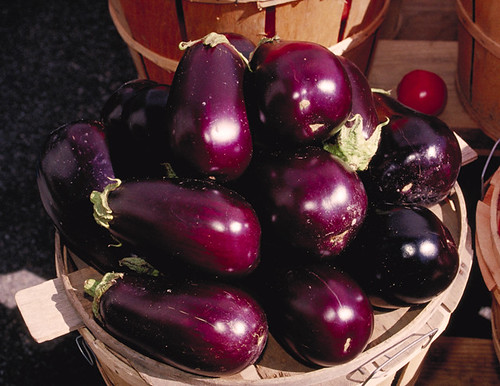 A few weeks ago, I co-hosted a dinner party with my friend Ana. We had both been to Israel, as had many of our guests, and we wanted to try our hand at as authentic an Israeli meal as we could churn out to help us remember our time there. (You’ll excuse the unexpectedly splendid-but-store-bought hummus and pita from Holy Land Deli that we served; we had our hands full with other culinary endeavors.)
A few weeks ago, I co-hosted a dinner party with my friend Ana. We had both been to Israel, as had many of our guests, and we wanted to try our hand at as authentic an Israeli meal as we could churn out to help us remember our time there. (You’ll excuse the unexpectedly splendid-but-store-bought hummus and pita from Holy Land Deli that we served; we had our hands full with other culinary endeavors.)
Our grated carrot salad was light and delicious. The homemade falafel was well-received. We barely made a dent in the massive pan of (also store-bought) buttery, flaky, baklava goodness. But what disappeared first and got the loudest, rave-est reviews was our baba ganoush — which was especially nice to hear from two of our friends who just got back from study abroad in Israel and were craving authentic nosh.
Baba ganoush is one the easiest foods/dips/condiments/you-name-it to make: it uses a limited ingredient list, requires no special skill, and although it’s faster to make with a food processor, you don’t actually need any special equipment to make it (because no, I don’t consider an oven, knives, and a fork “special equipment”). The general gist? Char an eggplant, peel the skin off, and mix it with tahini (sesame paste), salt, pepper, lemon juice, garlic, olive oil, and spices. Which spices? Work your way through your spice rack. Cumin and paprika are popular, as are spicier additions like cayenne pepper. Parsley, mint, onion, and tomato are all perfectly delicious flavor complements to the smoky eggplant.
 We made our baba ganoush before eggplants were in season, and were relegated to the slim pickings at the grocery store. Nothing tragic, certainly, but nothing special. But now, eggplants are overflowing from farmers markets’ tables. For two bucks (TWO BUCKS!!!) I found trays with two or more of your typical US-favorite “Black Beauties,” or four or more of the long, slender, and (often) lighter purple Japanese variety, which is my favorite (it has fewer seeds, making it less bitter than the bigger varieties). There were even small round ones that look like tomatoes, and others that look more like miniature zucchini), and all of them will work just fine.
We made our baba ganoush before eggplants were in season, and were relegated to the slim pickings at the grocery store. Nothing tragic, certainly, but nothing special. But now, eggplants are overflowing from farmers markets’ tables. For two bucks (TWO BUCKS!!!) I found trays with two or more of your typical US-favorite “Black Beauties,” or four or more of the long, slender, and (often) lighter purple Japanese variety, which is my favorite (it has fewer seeds, making it less bitter than the bigger varieties). There were even small round ones that look like tomatoes, and others that look more like miniature zucchini), and all of them will work just fine.
Seize this food moment, TCJewfolk-ians. Soon it will be winter squash and parsnip time, and while I love a good parsnip mash as much as the next guy, summer fruits and veggies are a fleeting commodity meant to be devoured with abandon!
My baba ganoush recipe comes from the spectacular “The Book of Jewish Food: An Odyssey from Samarkand to New York,” by Claudia Roden, winner of the hugely coveted James Beard Foundation Cookbook of the Year Award. (Seriously, it doesn’t get much better than that. Think Oscars-for-foodies. You should — nay, must — have this cookbook in your collection.)
Baba Ganoush
Makes: about 1 1/2 C
Ingredients:
1 lb eggplants (whole, fresh)
3 Tbsp tahini
1 Tbsp extra virgin olive oil
Juice of one lemon
1-3 cloves of garlic, minced
2+ Tbsp fresh parsley
salt and pepper to taste
1 tsp ground cumin (optional)
pinch of cayenne (optional)
Directions:
- Roast the eggplant. Heat the oven to 500 degrees/broil or as hot as your oven will go (you can also use a gas or charcoal grill). Prick the eggplants with a fork a couple times. Place in oven for 45 minutes, flipping once halfway through, cooking until the inside is very soft and the skin is blistered/black. Let cool, then peel. Discard the skin. Drain, if desired (depends on how juicy your eggplant is).
- Puree roasted eggplant in a food processor or mash with two knives or forks. Add parsley and pulse (or mince, then mix in, if not using a food processor).
- Mix in remaining ingredients until smoothly combined.
- Serve with just about anything, but pita and/or falafel are fantastic pairings.




“While I love a good parsnip mash as much as the next guy, summer fruits and veggies are a fleeting commodity meant to be devoured with abandon.”
Sara – love that! And I love a good eggplant! Plus I think they are as beautiful as pomegranates and the insides of ripe pineapples!
Thanks for this!
Which brand of tahini you use can make a huge difference in how “authentic” it tastes. hard to find decent stuff this side of the Med. I’ve recently given up and gone to more of a greek eggplant salad made with greek yogurt instead of tahini and it’s deli. Just eggplant, yogurt, lemon, garlic, salt and pepper.
Nice, Susan! Apparently it’s quite the Israeli thing to subsitute/add mayonnaise like you’ve used yogurt. Definitely a flexible recipe!
Amy – I also love cut kiwi and (whole) baby strawberries 😀